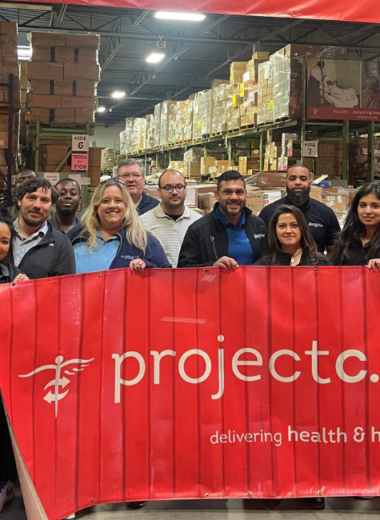As hospitals nationwide search to improve the cleanliness of their facilities, infection control continues to be one of their biggest challenges. This problem persists for several reasons: pathogens have become more resistant; patient flow demands have put added pressure to quickly clean and disinfect patient rooms; and human error, partly due to a lack of training that often results in the spread of bacteria.
As a result, healthcare-associated infections have reached unacceptable levels. On any given day, about one in 25 hospital patients has at least one healthcare-associated infection, according to the Centers for Disease Control. And the financial cost is significant: HAIs result in a whopping $96 billion to 147 billion in annual healthcare costs in the US, according to a recent study by researchers Albert Marchetti and Richard Rossiter.
To combat this challenge, Crothall Healthcare’s Environmental Services (EVS) team has developed a four-pronged approach to reduce infections in hospitals. Using this approach, we have witnessed a significant reduction in HAIs at several hospitals.
The strategy is based on these four tactics:
Hand Hygiene Performance. HAI reduction starts with hand hygiene—both performance and compliance are critical. To achieve both goals, Crothall employs rigorous on-site training for its employees, coupled with “secret shopper” practices, which are aligned with processes established by hospitals. In addition to our own training, our staff is trained in the techniques and disciplines we learn from the Handwashing for Life Institute, which we share with our clients.
High Profile Patient Room Cleaning. Ensuring “high touch” surfaces – such as light switches, restroom doors, toilets and bed hand rails – receive special attention will improve cleanliness and raise patient satisfaction scores. An emphasis on cleaning these surfaces not only effectively disinfects patient rooms but also increases a patient’s comfort level that their room has been properly disinfected. During a recent six-month period, based on more than 76,000 responses, Crothall received a 95% satisfaction score with the “High Profile Patient Room Cleaning” process.
Inspection and Validation. HAIs could be significantly reduced if more hospitals implemented an adenosine triphosphate (ATP) surface monitoring program. These programs provide a scientific assessment of surface cleaning to prevent contamination of high-risk areas throughout a hospital. For example, after Crothall implemented ATP monitoring system at Parkland Hospital in Dallas in 2012, the hospital’s infection rate dropped to 3.2 infections per 10,000 patient days – approximately half of the national average. Unfortunately, only 25 percent of US hospitals use an ATP monitoring program, according to Hygiena, a manufacturer of healthcare products.
Strategic Use of Technology. In 2006, Crothall Healthcare became the first healthcare support organization to evaluate the effectiveness and efficacy of germicidal UV-C solutions. These solutions, which use ultra-violet light to destroy drug-resistant pathogens, are helping many hospitals reduce their HAIs.
After Crothall introduced the disinfectant Surfacide at the Jersey Shore University Medical Center, HAIs were eliminated in the hospital’s intensive care unit after only four months. This technology provides the most benefits when its use is aligned with a hospital’s operating room terminal cleaning processes, strategic and specific use with isolation terminal cleaning, and intensive care units as well as specific enteric restrooms.
HAI risk to patients will always be a critical issue in hospitals. But companies that provide environmental services are generating new solutions, including unique partnerships with manufacturers that provide technology-based solutions, to help us improve cleaning and reduce infection. It may be time for hospitals to work more closely with their environmental services partner to determine if, working together, we can develop more aggressive, disciplined and innovative solutions to reduce HAIs.
Rich Feczko is Crothall Healthcare’s National Director of Standardization, Systems and Global Support Service Process Improvement.
Related Posts
Let’s Talk About the Right Solution for Your Organization
Get in touch to discuss how Crothall Healthcare’s services and solutions can help your healthcare organization exceed its goals. You’ll learn more about:
- The transparency we bring to outsourced support services
- How we design customized solutions for your unique needs
- The technology and innovation Crothall delivers across all our services


